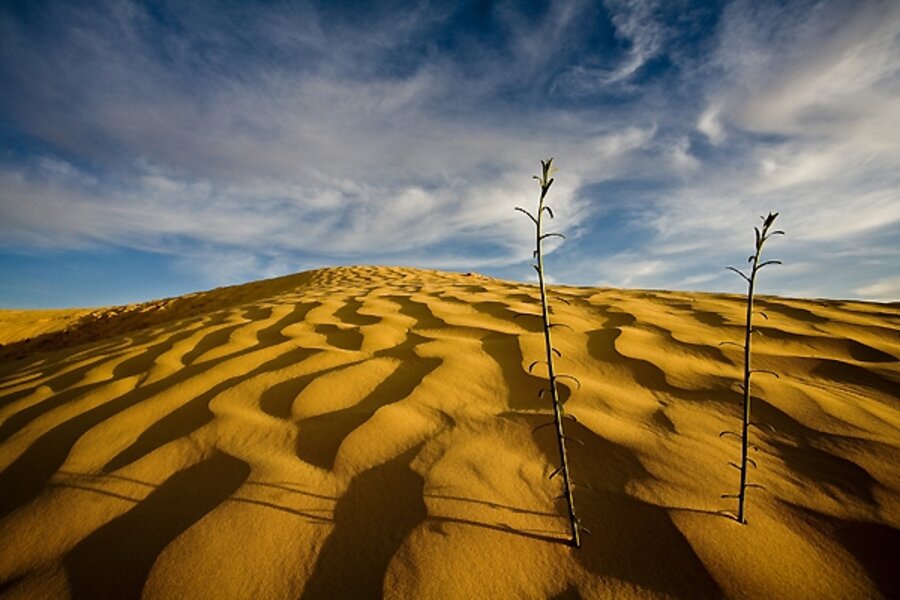Will the future of green energy sprout from the dry, arid Sahara Desert?
Loading...
Depends on who you ask.
This month, 12 prominent corporations signed a memorandum pledging to investigate the energy potential of the world's largest desert – the next step in a pie-in-the-sky plan tentatively labeled Desertec.
According to Bloomberg News, the 12 companies, led by the German engineering giant Siemens, believe that the sprawling Sahara Desert could one day supply up to 15 percent of Europe's electricity needs through solar panel arrays.
Various estimates from Reuters and the Financial Times have the project costing up to $555 billion; assuming the initial research proved promising, the actual implementation of Desertec could take decades.
Among the main goals of the project are "preparations for building a large number of networked solar thermal power plants distributed throughout the [Middle East and North Africa] region," a statement from the 12 companies reads. "The aim is to produce sufficient power to meet around 15 percent of Europe’s electricity requirements and a substantial portion of the power needs of the producer countries."
Desertec would apparently move power from North Africa to Europe with a series of high-voltage cables buried deep under the Mediterranean. The project is being touted as relief for overburdened European energy grids, and more importantly for Siemens, as a lure for investors.
“Saving the world is the future’s biggest ethical challenge, and at the same time it will be the biggest business opportunity,” the Desertec Foundation's Gerhard Knies said in a news conference today.
Dried out
Still, many analysts have their doubts. Writing on Earth2Tech, Katie Fehrenbacher points to the sluggishness of FutureGen Industrial Alliance, a public-private partnership working towards the creation of the world's first zero emissions power plant.
"If a much smaller energy project like FutureGen has been delayed and morphed to the extent that it’s earned the nickname NeverGen," Fehrenbacher writes, "we’re wondering how such an ambitious and expensive plan like Desertec will avoid becoming a mirage."
Fritz Vahrenholt, the head of renewable-power division of the German utility company RWE AG, was more skeptical still. “It’s a fantasy to think that we’ll be shipping electricity from the Sahara to Germany,” he told Bloomberg News.
Others have worried that the Desertec Foundation had not consulted the pertinent African nations, and would have to rely too much on unstable governments for the solar power, making the venture a risky proposition. Speaking recently to a reporter for Der Spiegel, Siemens CEO Peter Löscher deflected the question.
"Such oases of energy are a huge opportunity for Africa – and for every other region with enough sunshine hours. When capital, competence and resources from several different countries come together, it is advantageous for all those taking part," he said. "Besides, representatives from Arab states and from Africa are substantially involved."
Regardless of what happens in the Sahara, we'll always have Toto. Take a gander:





